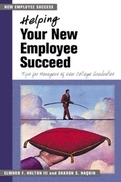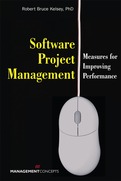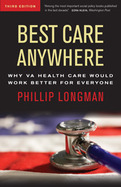Helping Your New Employee Succeed Part Two of a three-part series of a series of practical guidebooks on work transitions. These new books guide new hires-and their managers-step by step through the "breaking-in" process that is absolutely essential for helping new employees thrive. It is relatively easy to get new hires to be competent to perform the basic tasks they were hired to do. But success on the job is due to much more than that. It comes from understanding how the organization really works-the unique aspects of how things get done in that particular organization. And it comes from learning how to "fit in"-knowing how to get accepted, get respected, and earn credibility.
The three books in the series are:
How to Succeed in Your First Job: Tips for New College Graduates
Helping Your New Employee Succeed: Tips for Managers of New College Graduates
So, You're New Again: How to Succeed When You Change Jobs
Built around author Ed Holton's dynamic 12-step process-extensively field-tested and firmly grounded in research-these three volumes give new college graduates and their supervisors, as well as seasoned professionals who've changed jobs, essential insights and tools for mastering a variety of transition challenges.
Given the high costs associated with new employee turnover, no organization can afford to leave the new employee assimilation process to chance. Corporate human resources directors, managers of new employees, individual employees making job transitions, and career counselors alike will find powerful and practical new ideas and tools in these essential handbooks.
- Show supervisors how to improve retention by helping new hires become effective members of the organization, not just perform the specific tasks they were hired to do
- Uses a dynamic, field-tested, easy-to-follow 12-step process
• Identify measurement needs and goals
• Determine what measures to use to maximize the value of data
• Interpret data and report the results
• Diagnose quality and productivity issues
• Use metrics data to solve real problems
This is a must-read for project managers and engineering managers working in organizations where deadlines are tight, the workload is daunting, and daily crises are the rule rather than the exception. The text provides simple run rate data through progressively advanced measures, as well as:
• Examples that show you how to combine measures to solve complex problems
• Exercises that guide you through best practices for metric program development and implementation
From beginning to end, Software Project Management: Measures for Improving Performance guides you to improved project performance — long before you turn the last page!
Collaborative strategies work when they're designed by teams—where each person is heard, valued, and held accountable. This book is a practical guide for project team leaders and individual contributors who want their teams to play by a better set of rules.
Today's teams want more alignment among their members, better decision-making processes, and a greater sense of ownership over their work. This can be easy, even fun, if you have the right rituals.
Rituals are group activities during which people go through a series of behaviors in a specific order. They give teams the ability to create a collective point of view and reshape the processes that affect their day-to-day work. In Turning People into Teams, you'll find dozens of practical rituals for finding a common purpose at the beginning of a project, getting unstuck when you hit bottlenecks or brick walls, and wrapping things up at the end and moving on to new teams.
Customizable for any industry, work situation, or organizational philosophy, these rituals have been used internationally by many for-profit and not-for-profit organizations. By implementing just a few of these rituals, a team can capture the strengths of each individual for incredible results, making choices together that matter.
This enhanced edition includes nine moving video portraits of people who found passion, purpose, and profound fulfillment in places that surprised even them. Anybody can have a Life Reimagined moment!
Are you asking, “What's next?” You've finished one chapter of your life story and you have yet to write the next one. Many of us face these transitions at midlife, but they can happen at any point. It's a time full of enormous potential, and it defines a whole new phase of life. It's called Life Reimagined.
Here is your map to guide you in this new life phase. You can use the powerful practices and insights—enhanced with online tools and exercises at AARP's LifeReimagined.org—to help you uncover your own special gifts, connect with people who can support you, and explore new directions.
You'll be inspired by meeting ordinary people who have reimagined their lives in extraordinary ways. You'll also read the stories of pioneers of the Life Reimagined movement such as Jane Pauley, James Brown, and Emilio Estefan.
One of the profound truths that underlies this book is the liberating notion that each of us is “an experiment of one,” free to find our own path in this new phase of our lives. No old rules, no outdated societal norms, no boundaries of convention or expectation.
Each of the videos in the enhanced edition exemplifies the Life Reimagined manifesto of choice, curiosity, and courage. These are stories of ordinary people who hit a roadblock, looked around, saw something that spoke deeply to them, and boldly set off in a brand new direction. From a grandmother running her 73rd marathon, to a tattooed truck driver who teaches Zumba on the side, to a reluctant computer geek who had a “pizza epiphany,” they show that each of us has the freedom to choose our own way, in our own way, throughout all the years of our lives.
Winner of the 2014 Silver Nautilus Award
This enhanced edition includes nine moving video portraits of people who found passion, purpose, and profound fulfillment in places that surprised even them. Anybody can have a Life Reimagined moment!
Are you asking, “What's next?” You've finished one chapter of your life story and you have yet to write the next one. Many of us face these transitions at midlife, but they can happen at any point. It's a time full of enormous potential, and it defines a whole new phase of life. It's called Life Reimagined.
Here is your map to guide you in this new life phase. You can use the powerful practices and insights—enhanced with online tools and exercises at AARP's LifeReimagined.org—to help you uncover your own special gifts, connect with people who can support you, and explore new directions.
You'll be inspired by meeting ordinary people who have reimagined their lives in extraordinary ways. You'll also read the stories of pioneers of the Life Reimagined movement such as Jane Pauley, James Brown, and Emilio Estefan.
One of the profound truths that underlies this book is the liberating notion that each of us is “an experiment of one,” free to find our own path in this new phase of our lives. No old rules, no outdated societal norms, no boundaries of convention or expectation.
Each of the videos in the enhanced edition exemplifies the Life Reimagined manifesto of choice, curiosity, and courage. These are stories of ordinary people who hit a roadblock, looked around, saw something that spoke deeply to them, and boldly set off in a brand new direction. From a grandmother running her 73rd marathon, to a tattooed truck driver who teaches Zumba on the side, to a reluctant computer geek who had a “pizza epiphany,” they show that each of us has the freedom to choose our own way, in our own way, throughout all the years of our lives.
2012
-
Tells the remarkable story of how the Department of Veterans Affairs (VA) health-care system transformed itself from a national scandal to a national model
-
Explains the multiple advances and innovations that have enabled the VA to provide an unparalleled level of service
-
Recommends how to adapt and expand the VA model to the entire country
Expanding health-care coverage to uninsured Americans is a laudable goal, but the problems in our system go much deeper than that. The way that health care is delivered in this country is deeply flawed. Studies consistently show Americans spend more per person on health care than the people in any other country with far poorer outcomes. For example, Costa Ricans spend a fraction of what we do and live a year longer.
But a solution to America's health-care crisis does exist. It's not a theoretical alternative that's never been implemented. And you don't have to go to a foreign country to see it. It's already up and running, with hospitals and clinics located in every state. It's the VA health-care system, the largest integrated system in the United States.
In Best Care Anywhere, Phillip Longman tells the full story of the VA's amazing turnaround. Once a regular source of nationally reported scandals, the VA system is now hailed for its exceptional safety record, its use of evidence-based medicine, its health promotion and wellness programs, and its unparalleled adoption of electronic medical records and other information technologies. And it's the only health-care provider in the United States whose cost per patient has been holding steady as others' skyrocket.
The story of how and why the VA became the benchmark for quality medicine in the United States suggests that vast swaths of what we think we know about health, health care, and medical economics are just wrong. Longman suggests ways that this extraordinarily cost-effective model can be adapted so that a VA level of health care could be available to everyone.
New to this edition are an analysis of so-called Obamacare and the Ryan proposal to privatize Medicare. It also describes the results achieved when the VA electronic record system was implemented in West Virginia and Texas and features completely updated statistics and research, including 2011 cancer studies by Harvard University that prove VA cancer patients outlive cancer patients in traditional health care.
- Tells the remarkable story of how the Department of Veterans Affairs (VA) health-care system transformed itself from a national scandal to a national model
- Explains the multiple advances and innovations that have enabled the VA to provide an unparalleled level of service
- Recommends how to adapt and expand the VA model to the entire country
Expanding health-care coverage to uninsured Americans is a laudable goal, but the problems in our system go much deeper than that. The way that health care is delivered in this country is deeply flawed. Studies consistently show Americans spend more per person on health care than the people in any other country with far poorer outcomes. For example, Costa Ricans spend a fraction of what we do and live a year longer.
But a solution to Americas health-care crisis does exist. Its not a theoretical alternative thats never been implemented. And you dont have to go to a foreign country to see it. Its already up and running, with hospitals and clinics located in every state. Its the VA health-care system, the largest integrated system in the United States.
In Best Care Anywhere, Phillip Longman tells the full story of the VAs amazing turnaround. Once a regular source of nationally reported scandals, the VA system is now hailed for its exceptional safety record, its use of evidence-based medicine, its health promotion and wellness programs, and its unparalleled adoption of electronic medical records and other information technologies. And its the only health-care provider in the United States whose cost per patient has been holding steady as others skyrocket.
The story of how and why the VA became the benchmark for quality medicine in the United States suggests that vast swaths of what we think we know about health, health care, and medical economics are just wrong. Longman suggests ways that this extraordinarily cost-effective model can be adapted so that a VA level of health care could be available to everyone.
New to this edition are an analysis of so-called Obamacare and the Ryan proposal to privatize Medicare. It also describes the results achieved when the VA electronic record system was implemented in West Virginia and Texas and features completely updated statistics and research, including 2011 cancer studies by Harvard University that prove VA cancer patients outlive cancer patients in traditional health care.

























